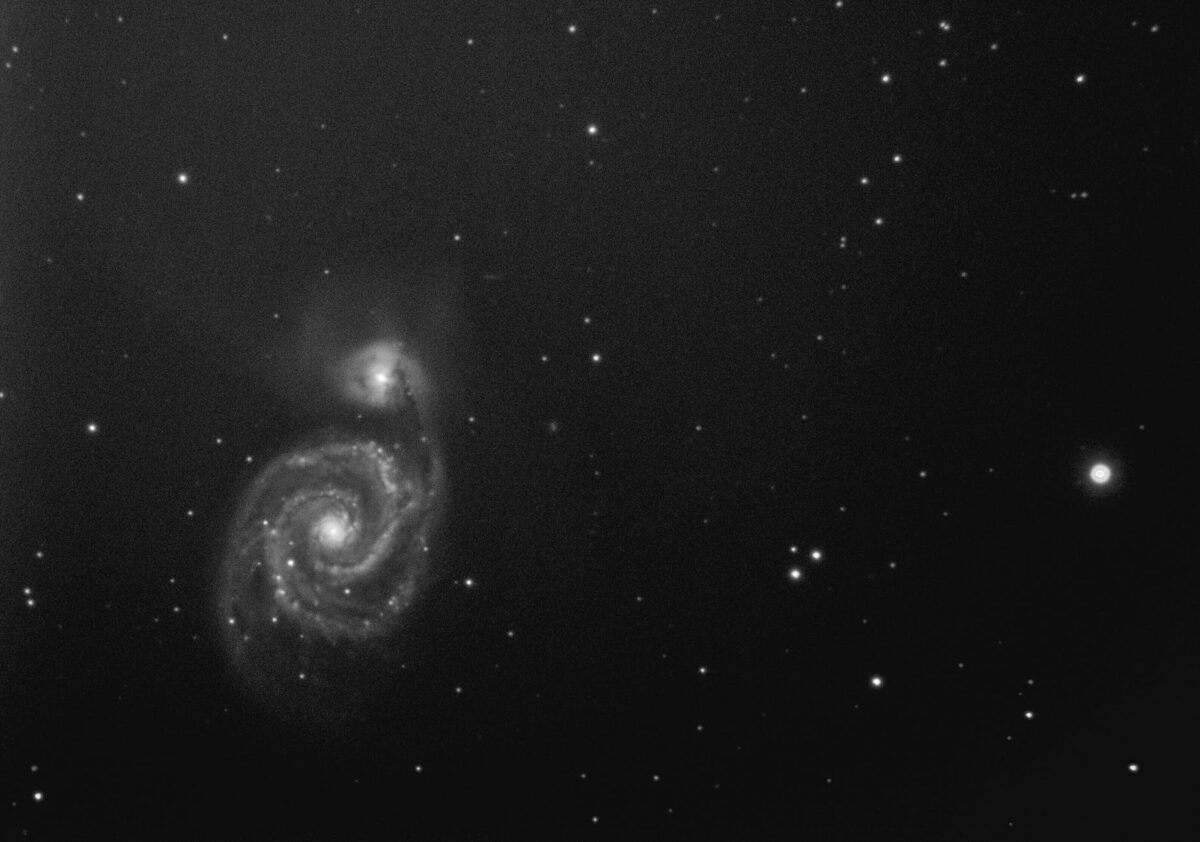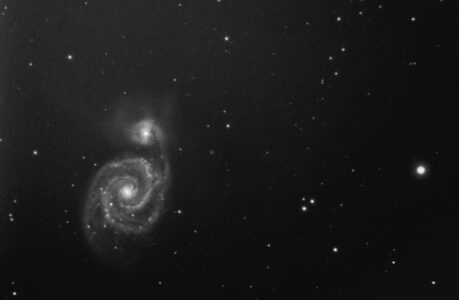Unlock the wonders of the night sky from the Emerald Isle as we delve into the fascinating world of galaxy observation using binoculars and small telescopes.
Ireland, with its lush landscapes and dramatic coastlines, might not be the first place that comes to mind when you think about stargazing. However, the Emerald Isle offers a unique opportunity for amateur astronomers and stargazers to explore the cosmos. One of the most awe-inspiring celestial wonders that you can observe from Ireland is galaxies. In this guide, we’ll delve into the techniques and equipment you can use to observe galaxies, including binoculars and small telescopes.
Ireland’s Dark Skies: A Stargazing Paradise
Before we embark on our cosmic journey, let’s take a moment to appreciate Ireland’s unique advantage for stargazers. Ireland boasts some of the darkest skies in Europe, particularly in its rural areas. The absence of light pollution in these regions creates the perfect conditions for observing distant galaxies. With patience and the right tools, you can witness the beauty of galaxies from the comfort of your backyard.
The Basics of Galaxy Observation
1. Choosing the Right Location
The first step in observing galaxies from Ireland is to find an ideal location. Head away from the city lights to a spot with minimal light pollution. Counties like Kerry, Mayo, and Donegal offer excellent dark-sky locations. Once you’ve chosen your spot, check the weather forecast and moon phase for the night you plan to observe. A clear, moonless night is ideal for galaxy hunting.
2. Understanding Galaxies
Galaxies are vast systems of stars, gas, and dust held together by gravity. They come in various shapes and sizes, from spiral galaxies like the Milky Way to elliptical and irregular galaxies. Each galaxy contains billions or even trillions of stars, and some are millions of light-years away from Earth.
Observing Galaxies with Binoculars
3. Selecting the Right Binoculars
Binoculars are an excellent choice for beginners and seasoned stargazers alike. To observe galaxies effectively, you’ll need binoculars with a large objective lens diameter (at least 50mm) and moderate magnification (7x to 10x). These specifications allow for a wider field of view and better light-gathering capability.
4. Dark Adaptation and Sky Charts
Before you start your observation, give your eyes time to adapt to the darkness. Using a red flashlight or covering your flashlight with red cellophane can help preserve your night vision. Additionally, bring along a sky chart or a stargazing app on your smartphone to identify the location of galaxies in the night sky.
5. Finding Galaxies with Binoculars
Galaxies can be challenging to spot due to their faintness, but with patience and practice, you can locate them. Start by identifying prominent constellations like Ursa Major, also known as the Big Dipper, which contains galaxies like M81 and M82. Use your binoculars to scan the area around these constellations, focusing on faint fuzzy patches of light. With persistence, you may spot these distant galaxies.
Observing Galaxies with a Small Telescope
6. Choosing the Right Telescope
While binoculars offer a great introduction to galaxy observation, a small telescope can provide more detailed views. Telescopes come in various designs, including refractors, reflectors, and compound telescopes. For observing galaxies, a reflector or compound telescope with an aperture of at least 4 inches (100mm) is recommended.
7. Setting Up Your Telescope
Setting up a telescope requires careful alignment and calibration. Begin by aligning the telescope’s finder scope with the main optical tube. Then, aim your telescope at a bright star or planet to align the finderscope and the main optics. Once calibrated, you can use your telescope to pinpoint galaxies with greater precision.
8. Galaxy Filters and Eyepieces
To enhance your galaxy observations, consider using specialized filters designed for deep-sky objects. These filters can help increase contrast and reduce light pollution. Additionally, investing in a variety of eyepieces with different focal lengths will allow you to adjust the magnification and field of view for optimal galaxy viewing.
9. Finding and Observing Galaxies
Using star charts or astronomy apps, locate the galaxies you want to observe. Most galaxies are relatively faint, so patience and persistence are key. Once you’ve found your target, spend time studying it. Notice any details, such as spiral arms or a bright core, and try different eyepieces and filters to enhance your view.
Notable Galaxies to Observe from Ireland
10. The Andromeda Galaxy (M31)
One of the most famous galaxies visible from Ireland is the Andromeda Galaxy, also known as M31. Located in the constellation Andromeda, this spiral galaxy is approximately 2.537 million light-years away from Earth. It is the closest spiral galaxy to our Milky Way and offers a stunning view through binoculars or a small telescope.
11. The Whirlpool Galaxy (M51)
The Whirlpool Galaxy, also known as M51, is another captivating galaxy for observation. This spiral galaxy is situated in the constellation Canes Venatici and is famous for its striking appearance. M51 is actually two galaxies interacting with each other, creating a beautiful celestial dance that can be observed with a telescope.
12. The Triangulum Galaxy (M33)
Located in the constellation Triangulum, the Triangulum Galaxy (M33) is another gem in the night sky. M33 is a relatively large spiral galaxy, and its proximity to Earth, at approximately 2.731 million light-years away, makes it a fantastic target for observation. With a small telescope, you can admire its spiral structure and star-forming regions.
13. The Sculptor Galaxy (NGC 253)
For those in southern Ireland with a good southern horizon, the Sculptor Galaxy (NGC 253) is a superb choice. This spiral galaxy is located in the constellation Sculptor and is often referred to as the “Silver Coin” or “Silver Dollar Galaxy” due to its appearance. Observing NGC 253 can be a rewarding experience, showcasing the intricate details of a distant galaxy.
Astrophotography: Capturing Galaxies in Ireland’s Skies
14. A Brief Introduction to Astrophotography
If you’re passionate about galaxies and want to capture their beauty in photographs, astrophotography is an exciting option. Astrophotography allows you to document your observations and share them with others. To get started, you’ll need a DSLR camera, a sturdy tripod, and a tracking mount to compensate for Earth’s rotation.
15. Techniques for Astrophotographing Galaxies
Astrophotographing galaxies can be challenging, but the results can be breathtaking. Start by aligning your camera with your telescope and selecting a long exposure time to capture more light. Use manual focus to ensure the galaxy is sharp, and consider taking multiple exposures to stack and enhance the final image. Image processing software like Adobe Photoshop or specialized astrophotography software can further improve your galaxy photos.
Final Thoughts
Ireland’s dark skies offer a unique opportunity for stargazers and astronomers to observe galaxies, whether with binoculars, a small telescope, or through the lens of a camera. Remember that patience and practice are key when exploring the cosmos. With the right equipment and knowledge, you can unlock the mysteries of distant galaxies and experience the wonder of the universe from the Emerald Isle.
As you embark on your galaxy-watching journey, always check the weather conditions and moon phases for the best viewing experiences. Whether you’re admiring the spiral arms of the Andromeda Galaxy, the ethereal dance of the Whirlpool Galaxy, or the distant beauty of the Triangulum Galaxy, Ireland’s dark skies hold a universe of wonders waiting to be explored.
So, pack your binoculars or set up your telescope, and prepare to be amazed by the breathtaking galaxies that grace the night sky over Ireland. Happy stargazing!

